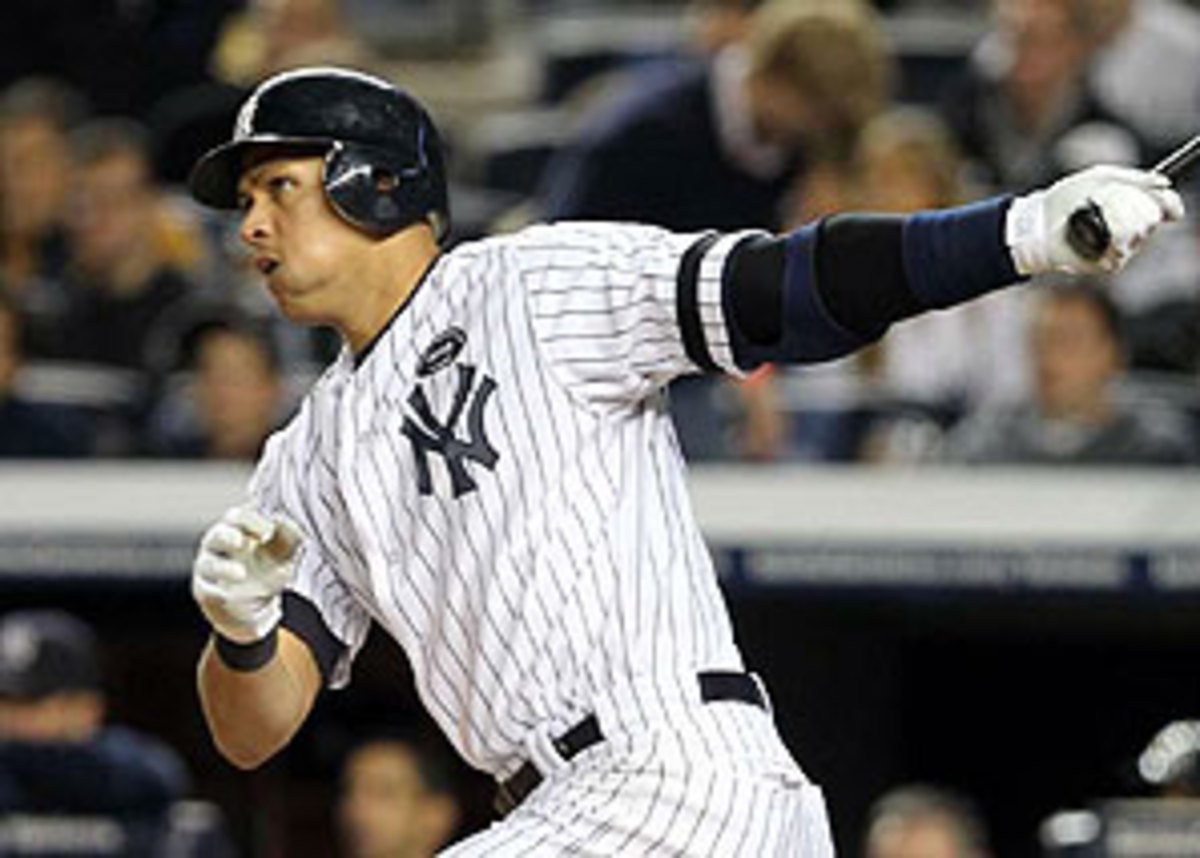Boras book gave mostly accurate look at player A-Rod would become


Forgive former Texas owner Tom Hicks if he would like to forget the anniversary, but one week from Sunday marks exactly 10 years since Hicks dropped jaws at the winter meetings by handing shortstop Alex Rodriguez an industry-rattling $252 million, 10-year contract. The contract was so outsized that even a decade later the best shortstop in baseball, Troy Tulowitzki, came up almost $100 million short from matching it this week ($157.75 million for 10 years).
How did it work out for Hicks? He wound up paying Rodriguez about $119 million for three seasons, all of them last-place finishes, and all of them tainted by Rodriguez's admission that he played those years on steroids.
Part of the selling of Rodriguez was a hardbound, shiny blue book of statistical projections by agent Scott Boras, a slick promotional device Boras often employs on behalf of his clients. Ten years later, if you happen to see Boras at the winter meetings in Orlando next week handing out encyclopedic volumes regarding Jayson Werth, Adrian Beltre or Rafael Soriano, does the Rodriguez book suggest his latest tomes can be trusted?
You might be surprised that Boras, never accused of understatement, actually undersold Rodriguez as a power hitter. (Feel free to make your own conclusions about the role steroids have played in the kind of power from Rodriguez that not even his agent saw coming.)
The book included statistical projections for Rodriguez through his age 35 season, 2011. With a year still to go, Rodriguez has exceeded Boras' expectations for home runs and nearly matched them for RBIs, while coming close to his projected rate stats. Check out the comparisons between the Rodriguez Boras projected through 2011 and Rodriguez today:
Where Boras went wrong was overrating Rodriguez as a runner and pure hitter as he aged. To meet Boras' projections, for instance, Rodriguez in 2011 would need 322 hits, 208 runs, 134 doubles and 109 stolen bases.
Rodriguez will continue this trend of becoming more and more of a power hitter and less the well-rounded player as he ages through his late 30s and beyond -- especially with the new Yankee Stadium inflating his numbers. Rodriguez ranked 23rd in baseball last year in home OPS (.920). But out of Yankee Stadium he was a much more ordinary hitter -- posting a .790 OPS, which ranked 50th in baseball, trailing such hitters as Scott Podsednik, Alex Gonzalez and Daric Barton.
Ten years ago, not only did Boras project the future for Rodriguez in the big blue book, he also did the same for Derek Jeter and Nomar Garciaparra. He ran statistical models to compare the three elite shortstops through their age 35 season -- Jeter and Garciaparra had just completed their age 26 season. So how did Boras do on Jeter and Garciaparra?
Boras actually did very well with Jeter, underscoring the shortstop's reliability through the years. Garciaparra fell off mightily -- so much so that his age 35 season was his last in baseball.
By the way, two years after producing the Rodriguez book, Boras published one about Greg Maddux. His prediction for Maddux's next five years (85-75, 2.90) proved too optimistic (74-62, 4.11). But give Boras credit for this: his model predicted that Maddux would have 358 career wins at age 41. Maddux retired at age 42 with 355 wins.
Spare me the weeping about the Nationals losing Adam Dunn. Dunn is an American League player -- a bad defender with a big body who is 31 years old - and Washington would have been reckless to give him the years and dollars the White Sox offered (four years, $56 million). You don't want Dunn playing first base now, nevermind for $14 million when he's 34 years old. The Nats can pocket a draft pick, which right now stands to be the 23rd pick overall, and make better use of the money toward putting premium defense behind their young pitching. Don't discount the potential of the draft pick. From 2002-05, the players picked 23rd overall were Jeff Francouer, Brandon Wood, Phil Hughes and Jacoby Ellsbury.
That said, Dunn is a perfect fit for the White Sox, who just significantly reduced their six-win gap from the AL Central champion Twins. Chicago's 2010 season was wrecked when they did not pursue Jim Thome and were left without enough lefthanded power. The White Sox received only 24 home runs from lefthanded hitters last season with a .354 slugging percentage. And their lefthanded hitters against lefthanded pitchers were abysmal: two homers and a .286 slugging percentage.
Sure, the White Sox may have slightly overpaid for Dunn, but that's an acceptable strategy when you address a major need.
